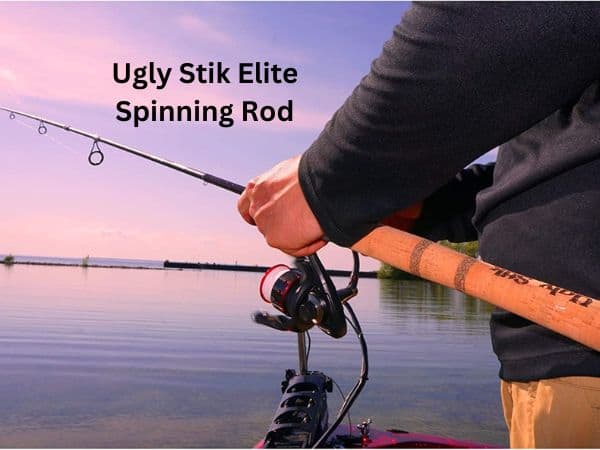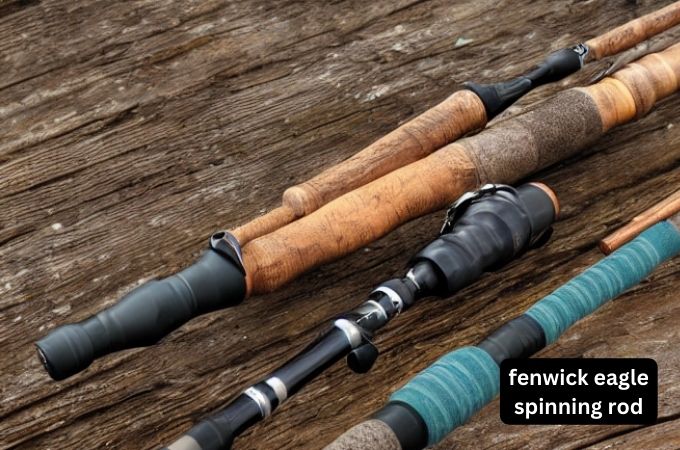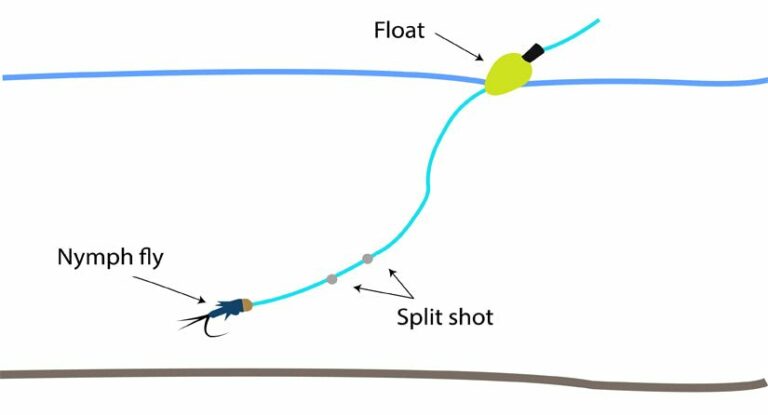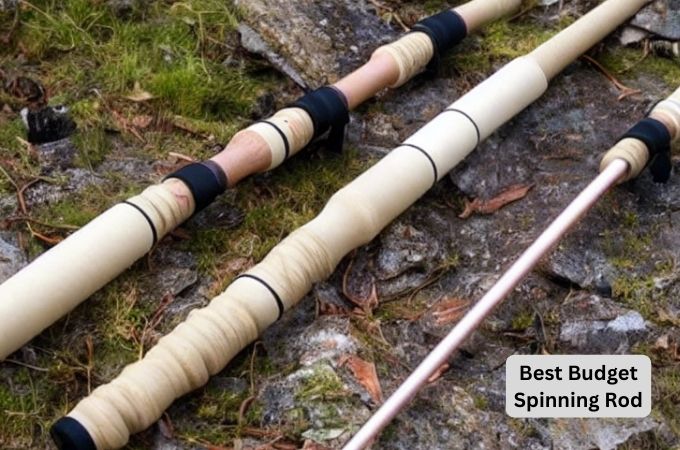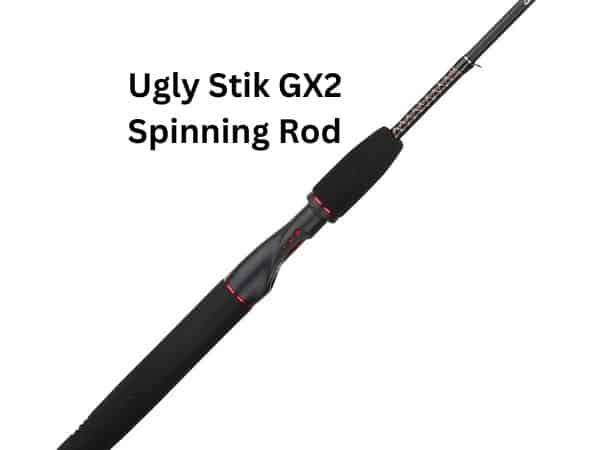Simple Steps: How To Tie A Knot On A Baitcaster
Tying a knot on a baitcaster might seem like a daunting task, especially if you’re new to fishing. But fear not! I’m here to help you navigate through the tangled world of knots and guide you towards a strong and secure knot that will keep your bait firmly attached. In this article, I’ll walk you step-by-step through the process of tying a knot on a baitcaster, ensuring you have the skills to tackle any fishing adventure. So, let’s dive in and unravel the mystery of how to tie a knot on a baitcaster!
How to Tie a Knot on a Baitcaster
A baitcaster reel is a popular choice among anglers for its precision and control. To ensure a successful fishing trip, it’s essential to know how to tie a knot on a baitcaster properly. The right knot will ensure your line stays secure and won’t slip or break under pressure. In this comprehensive guide, we will walk you through the process of tying various knots specifically designed for baitcasters. From the improved clinch knot to the palomar knot, we will cover all the essentials to help you become a knot-tying pro.
1. The Improved Clinch Knot
The improved clinch knot is one of the most widely used fishing knots due to its reliability and simplicity. It is suitable for tying monofilament, fluorocarbon, and braided lines. Follow these steps to tie the improved clinch knot on a baitcaster:
- Thread the line through the eye of the baitcaster reel.
- Create a loop by passing the tag end of the line through the eye of the hook.
- Wrap the tag end around the standing line 5-7 times, working back toward the loop you created.
- Pass the tag end through the loop you created near the eye of the hook.
- Moisten the knot and tighten it by pulling the tag end and standing line simultaneously.
- Trim the excess tag end.
The improved clinch knot provides excellent strength and is easy to tie, making it a popular choice for baitcaster reels.
2. The Palomar Knot
The palomar knot is another fantastic knot option for baitcasters. It is known for its strength and is ideal for joining braided line to terminal tackle. Follow these steps to tie the palomar knot on a baitcaster:
- Double about 6 inches of line and pass it through the eye of the hook.
- Tie a simple overhand knot, creating a loop alongside the hook.
- Pass the loop over the hook and slide it up toward the end of the line.
- Moisten the knot and pull both ends to tighten.
- Trim the excess tag end.
The palomar knot is highly reliable, retains nearly 100% of the line’s strength, and is easy to tie even in low-light conditions.
3. The Trilene Knot
The trilene knot is a versatile option for baitcaster reels, known for its simplicity and strength. It works well with monofilament and fluorocarbon lines. Follow these steps to tie the trilene knot on a baitcaster:
- Thread the line through the eye of the baitcaster reel and fold it back parallel to the standing line.
- Make five turns around the double line, working away from the loop.
- Pass the tag end through the loop above the eye of the hook.
- Moisten the knot and pull both the standing line and the tag end to tighten.
- Trim the excess tag end.
The trilene knot offers excellent strength and is easy to tie, making it a reliable choice for baitcasters.
4. The Uni Knot
The uni knot, also known as the Duncan loop knot, is a simple and strong knot for baitcasters. It is suitable for monofilament, fluorocarbon, and braided lines. Follow these steps to tie the uni knot on a baitcaster:
- Thread the line through the eye of the baitcaster reel and double it back, forming a loop.
- With the loop, make a series of wraps around the double line, working away from the loop towards the reel.
- Pass the tag end through the loop you created near the eye of the hook.
- Moisten the knot and tighten it by pulling the standing line and the tag end simultaneously.
- Trim the excess tag end.
The uni knot is versatile, strong, and easy to tie, making it a dependable choice for baitcaster reels.
5. The San Diego Jam Knot
The San Diego Jam Knot is a strong knot that is especially useful for connecting fluorocarbon or monofilament lines to terminal tackle. Follow these steps to tie the San Diego Jam Knot on a baitcaster:
- Pass the line through the eye of the baitcaster reel and fold it back, creating a loop.
- Wrap the loop with the tag end for 7-8 turns.
- Pass the tag end through the loop you created near the eye of the hook.
- Moisten the knot and tighten it by pulling the standing line and the tag end simultaneously.
- Trim the excess tag end.
The San Diego Jam Knot is highly reliable and can withstand significant pressure, making it an excellent choice for baitcasters.
6. The Double Uni Knot
The double uni knot is a versatile knot that is ideal for joining lines of similar or different diameters. It works well with monofilament, fluorocarbon, and braided lines. Follow these steps to tie the double uni knot on a baitcaster:
- Overlap the ends of the lines you want to join.
- Create a loop with the first line and pass it through the loop twice.
- Repeat the same process with the second line, passing it through the loop twice in the opposite direction.
- Moisten the knot and pull the standing lines to tighten it.
- Trim the excess tag ends.
The double uni knot is strong, easy to tie, and allows flexibility in connecting lines of different materials and diameters.
7. The Alberto Knot
The Alberto knot is a popular choice for connecting lines of different materials, such as monofilament to braided line. It is known for its sleek profile and durability. Follow these steps to tie the Alberto knot on a baitcaster:
- Overlap the ends of the lines you want to join.
- Take the tag end of the first line and make several wraps around the second line and itself, working away from the loop.
- Pass the tag end through the loop you created.
- Moisten the knot and pull both standing lines to tighten it.
- Trim the excess tag ends.
The Alberto knot is low-profile, strong, and ideal for connecting lines of different materials and diameters.
8. The Blood Knot
The blood knot is a reliable knot for joining two lines of similar diameter. It is often used for making leaders or combining sections of fishing line. Follow these steps to tie the blood knot on a baitcaster:
- Overlap the ends of the lines you want to join, facing each other.
- Take the tag end of the first line and wrap it around the second line 4-5 times.
- Pass the tag end of the first line through the loop created between the two lines.
- Repeat the same process with the second line, wrapping it around the first line 4-5 times.
- Moisten the knot and pull both standing lines to tighten it.
- Trim the excess tag ends.
The blood knot is strong, easy to tie, and ensures a smooth connection between two lines.
9. The Surgeon’s Knot
The surgeon’s knot is a straightforward and effective knot for connecting two lines of similar or different diameters. It is commonly used in fishing and other applications. Follow these steps to tie the surgeon’s knot on a baitcaster:
- Overlap the ends of the lines you want to join.
- Tie an overhand knot by passing one line around itself and through the loop.
- Pass the tag end of the second line through the same loop.
- Tie another overhand knot by passing the tag end of the second line around itself and through the loop.
- Moisten the knot and pull both standing lines to tighten it.
- Trim the excess tag ends.
The surgeon’s knot is simple, reliable, and suitable for joining lines of various materials and diameters.
10. The Nail Knot
The nail knot is a popular choice for attaching leaders or backing to a fly line. It can also be used to connect two lines of different diameters. Follow these steps to tie the nail knot on a baitcaster:
- Place a nail or tube alongside the lines you want to join.
- Wrap the tag end of the first line around both the nail and the lines, making 5-6 turns towards the tag end.
- Pass the tag end through the loop between the lines and the nail.
- Remove the nail or tube and moisten the knot.
- Slide the knot tight against the eye of the hook or swivel.
- Trim the excess tag end.
The nail knot is strong, secure, and commonly used for attaching leaders or joining lines of different diameters.
Frequently Asked Questions
What is the best knot to use on a baitcaster?
The best knot to use on a baitcaster is the Palomar knot. It is a strong and reliable knot that is easy to tie. This knot is well suited for connecting the line to the hook or lure, ensuring a secure connection that won’t slip or come undone during casting or retrieving.
How do you tie a Palomar knot on a baitcaster?
To tie a Palomar knot on a baitcaster, follow these steps:
- Double about 6 inches of line and pass it through the hook eye or lure loop. Form a loop and hold it between your thumb and finger.
- With your free hand, pass the tag end through the loop you created in the previous step.
- Hold the tag end and the standing line, then wet the line to reduce friction.
- Using both hands, slowly pull the tag end and standing line in opposite directions, tightening the knot down onto the hook eye or lure loop.
- Trim any excess line, leaving a small tag end.
The Palomar knot is now securely tied on your baitcaster.
Can you use a different knot on a baitcaster?
While the Palomar knot is highly recommended for baitcasters due to its strength and ease of tying, you have the flexibility to use other knots as well. Some other popular knots used on baitcasters include the Improved Clinch knot, Uni knot, and the Double Uni knot. However, it is important to ensure that the knot you choose is suitable for the type of line you are using and provides a secure connection.
What is the importance of using a strong knot on a baitcaster?
Using a strong knot on a baitcaster is crucial because it ensures that your line is securely attached to the hook or lure. A weak knot can result in lost fish and frustration. Baitcasting reels are often used for heavier fishing applications, and a strong knot is essential to withstand the increased pressure and prevent the line from slipping or breaking during casting, retrieving, and fighting a fish.
Are there any tips for tying knots on a baitcaster?
Here are some helpful tips for tying knots on a baitcaster:
- Always wet the line before tightening the knot to reduce friction and prevent heat buildup that could weaken the line.
- Ensure the knot is tightened down securely by pulling both the tag end and standing line in opposite directions.
- Trim any excess line close to the knot, leaving a small tag end to prevent it from slipping through the knot.
- Practice tying knots before heading out on the water to ensure you are proficient and confident in your knot-tying abilities.
- Consider using a knot-tying tool or device to assist in tying knots, especially if you have difficulty with manual dexterity or tying intricate knots.
Following these tips will help you tie strong and reliable knots on your baitcaster.
Final Thoughts
Tying a knot on a baitcaster is a crucial skill for any angler. By following these simple steps, you can ensure that your knot is secure and reliable. Start by threading the line through the eye of the baitcaster, then make a loop and pass the tag end through it twice. Pull the loop tight and trim any excess line. This knot provides maximum strength and prevents slippage. Now that you have mastered the art of tying a knot on a baitcaster, you can confidently cast your line and reel in the big catch!
